
A Beginners Guide To Easy And Beautiful Southern California Yard Design
Published: 05/10/2022 | Updated: 29/03/2023
Even if you're a Southern Californian native, understanding how to best care for your outdoor space in the region's dry climate can be a bit of a challenge. And although most of us are working from home and have far more time on our hands than we ever used to have, the possibility remains that someday (in the hopefully near future) we'll all be bracing ourselves to take on that daily commute yet again.


But throwing your hard-earned money into sprucing up your backyard just to have it all wither away and die within weeks feels a little soul-crushing. So if you're up for the challenge, here are some design ideas to make sure that your beautiful garden survives the San Bernardino and Los Angeles County heat and lack of rainfall.
Pro Tip #1: Start Small
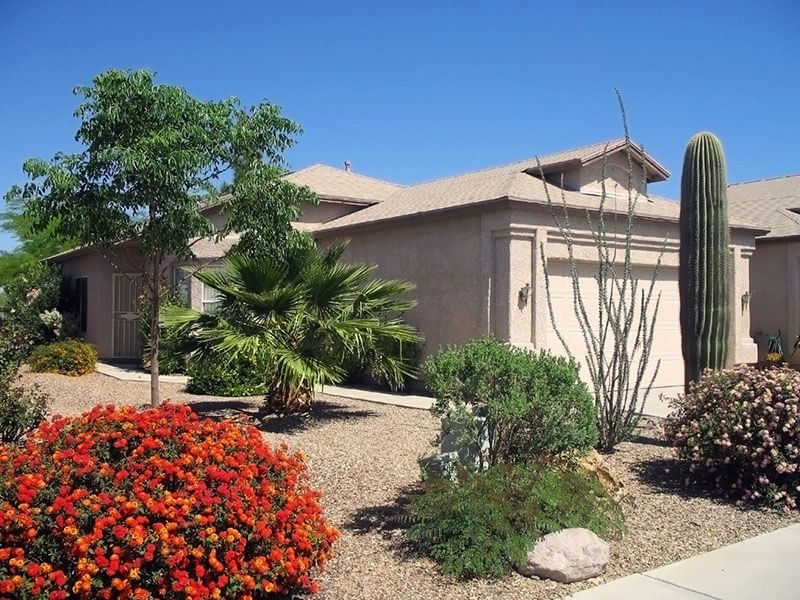
If a green thumb is more a wish-list item than an actual skill you possess, you'll want to start small. This can mean buying one or two plants, learning all about gardening basics and how to care for them, and then adding more to the mix once you feel comfortable doing so. It may be tempting to buy a bunch of plants and create your little oasis right away, but that can get pretty chaotic quickly, especially if yard maintenance isn't already securely positioned somewhere in your daily or weekly routine. After all, Rome wasn't built in a day - and your Santa Barbara landscaping project wont is either.
Pro Tip #2: Go Native
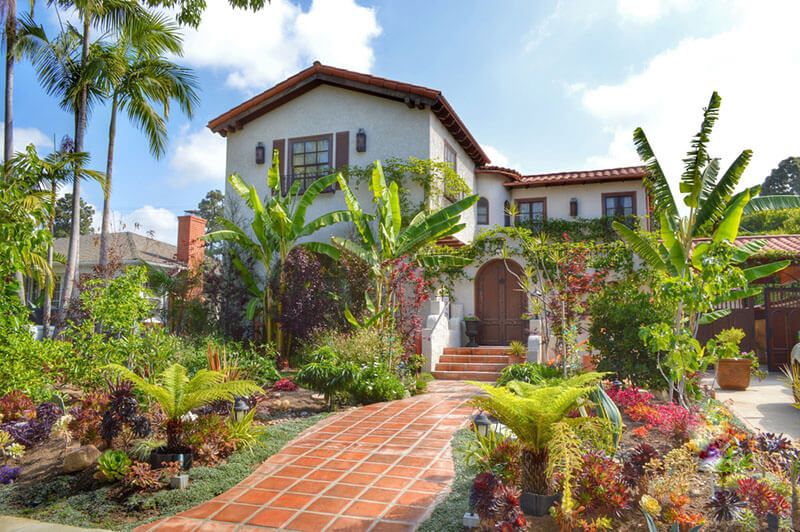
Maybe you're from a tropical area and truly miss the crabgrass and delicate flowers that die if it doesn't rain for one whole week. Most Southern California areas, like Riverside and San Diego, don't see much annual rainfall, so your best bet is to select plants well-equipped to handle the region's brutally hot summer temperatures and year-round droughts.
Native and drought-tolerant plants are important for Southern California landscaping because they're the foundation of the native ecosystem. So, not only will your bank account thank you for your selection, the local wildlife will, too.
Southern California Native Plants:
Because no other plants cannot only tolerate but also thrive in such dry and hot weather circumstances, native planting is crucial in areas that encounter tough climatic conditions. Because of this, selecting native plants for your landscape design ideas is always advised for homes in southern California. As San Diego and Santa Barbara are known for their particularly harsh summer climate, here are some of our favorite native plants for those areas.
San Diego Native Plants:
San Diego is in USDA Plant Hardiness Zones 8a through 10b. Here are some of the best San Diego natives that can survive that dry and hot summer climate.
1. San Diego Sunflower (Viguiera laciniata):
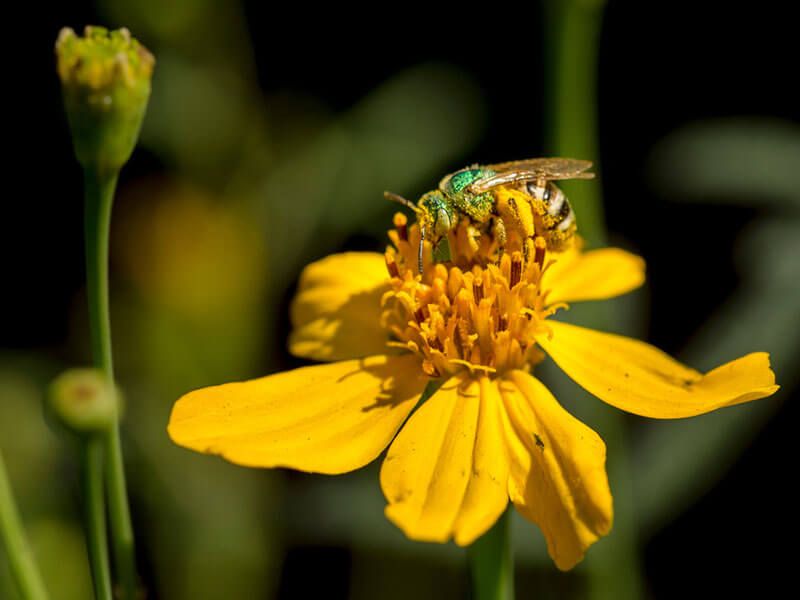
The San Diego sunflower is a floriferous perennial shrub that grows naturally in southern San Diego County.
It can bloom year-round, producing vibrant yellow sunflower-like blossoms that add a colorful and beautiful display to any garden and will make for a beautiful Southern California landscape design. The San Diego Sunflower can withstand any environment, including regular watering, dry conditions and high temperatures, sun, partial shade, and sandy as well as clay soil, but it dislikes frost and standing water. When planning the design for your backyard, make sure to pair it up with other natives such as Trichostema and Salvia. Together, they will make for a show-stopping display of vividly colorful blooms.
2. Silver Carpet (Dymondia margaretae):

Silver Carpet (Dymondia margaretae) is an evergreen perennial plant that develops a dense silvery-green carpet. This makes it ideal for use as a ground cover, in rock gardens, and in between stone pavers. This hardy plant is low maintenance and has low water requirements to survive. Plant it in full sun and well-drained soil and it will grow easily. And as it slowly spreads, it effectively chokes out all weeds. This feature along with being deer-resistant has made Silver Carpet become a new popular alternative to lawns. And since Silver Carpet grows naturally in coastal desert climates, it is capable of surviving and thriving in conditions such as poor and rocky soil, drought, high temperatures, and salt spray. This makes it a perfect fit for San Diego landscape design. And during the summer, tiny, yellow daisy flowers bloom beautifully among the gray-green foliage, which makes it also a great choice to increase your house’s curb appeal.
3. Western Redbud (Cercis occidentalis):
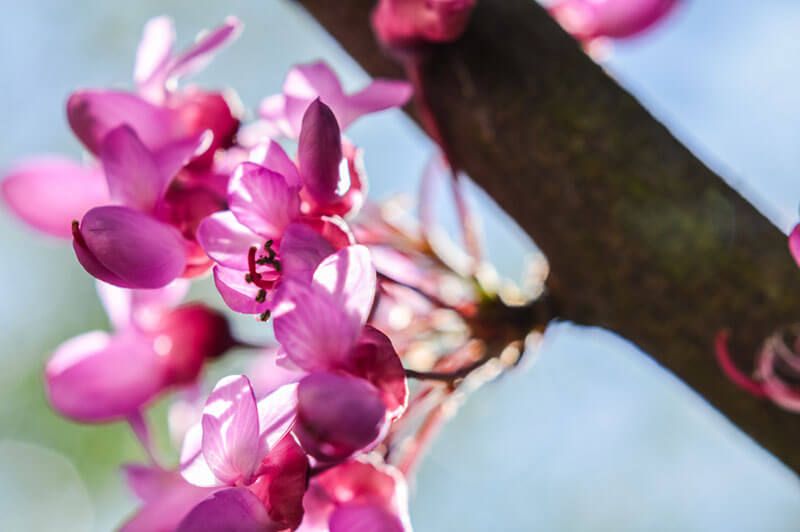
Western Redbud (Cercis occidentalis) is a small flowering deciduous multi-trunk tree or shrub that grows up to 20 feet tall. The Western Redbud is a low-maintenance plant native to California. This makes it drought tolerant and capable of thriving in harsh conditions. As a result, it can grow easily in hot, dry conditions, full sun exposure, partial shade, and both sandy and clay soil. But it will produce more flowers and have much denser foliage when planted in full sun and well-drained soil. It produces an abundance of blooms in the spring and summer along the bare stems, just before the leaves emerge, with a plethora of magenta pea-shaped blossoms. These vivid flowers go on to attract important pollinators like hummingbirds and butterflies. Additionally, as a deciduous tree with lovely heart-shaped leaves, it provides a breathtaking seasonal spectacle as the leaves change into lovely autumn hues that first appear somewhat red, then blue-green, and then ultimately turn yellow before falling to cover the ground in a vibrant fall show. This makes it perfect to use as a specimen tree in your ornamental garden. And with its small size, it can easily fit in outdoor spaces that are on a smaller scale. You can even display it in your front garden and use its stunning aesthetics to increase the appeal of your home's outdoor spaces.
Santa Barbara Native Plants:
Santa Barbara is in USDA Plant Hardiness Zones 9 through 10. Here are some of the best Santa Barbara natives that can survive that warm and dry Mediterranean-type climate.
1. Desert Agave (Agave deserti):
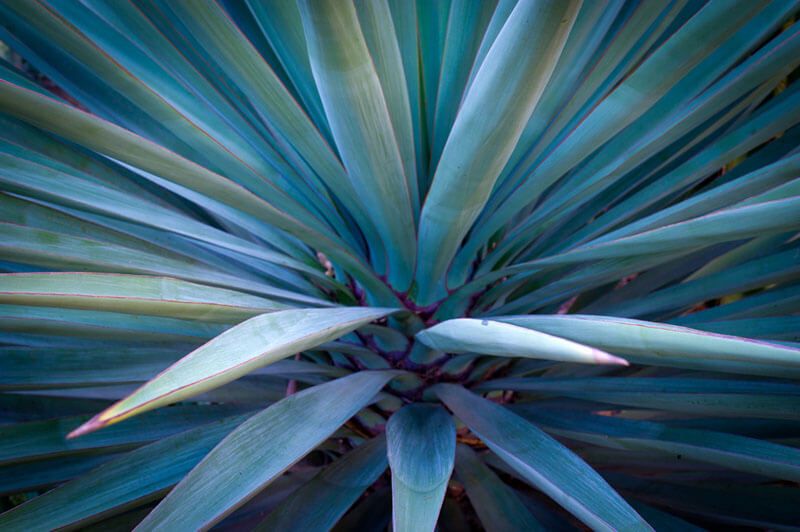
The desert regions of southern California, Arizona, and Baja California are home to the agave species known as Agave deserti. Capable of growing to large sizes, this succulent plant comes in beautiful shades of blue and silver and will create a beautiful view in your garden design. Throughout the warm weather of spring, its slender yellow flower stalks cover arid rocky slopes and washes. Succulents are known drought-tolerant warriors that can survive the harshest of climates and can thrive easily in desert conditions. The desert regions of southern California, Arizona, and Baja California are home to the agave species known as Agave deserti. Capable of growing to large sizes, this succulent plant comes in beautiful shades of blue and silver and will create a beautiful view in your garden design. Throughout the warm weather of spring, its slender yellow flower stalks cover arid rocky slopes and washes. Succulents are known drought-tolerant warriors that can survive the harshest of climates and can thrive easily in desert conditions.
2. Chamise (Adenostoma fasciculatum):
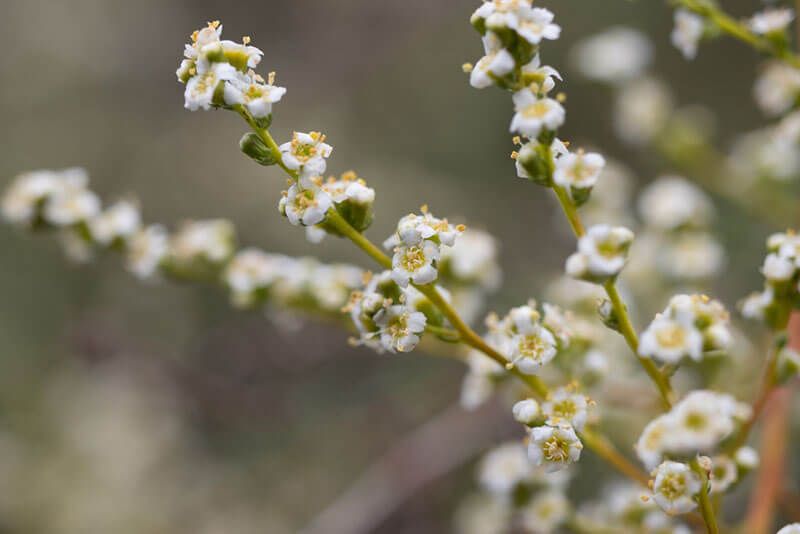
Chamise or greasewood is an evergreen, drought-tolerant flowering shrub that is native to California and Baja California. And in the ecoregion of California, the Chamise shrub is considered one of the most common species, spreading over an estimated three million hectares of chaparral. This hardy native shrub can grow in the harshest conditions. As such, it can thrive in poor soil as well as in hot and dry climates, which makes it one of the most ideal landscaping design ideas for Santa Barbara. During the spring, delicate and beautiful white flowers bloom in small, plume-like clusters. And these blossoms make it a popular ornamental garden plant. The Chamise shrub will grow well in full sun and, once established, will require very little maintenance. Additionally, because it is a native plant, it can support nature restoration by protecting the soil and reducing erosion. It also offers local wildlife natural habitat. However, take note that this shrub is abundant with oils in its leaves and branches, which makes it highly flammable especially when the plant is left to dry. Therefore, it is advisable to choose its position carefully in your garden design.
Pro Tip #3: Don't Forget About The Babies

There are two very important things you need to know about young plants: they require more water until they're established, and their looks are often deceiving. It's easy to go with drought-resistant plants and then overlook them in your watering schedule. More often than not, those plants require additional care during their first year living in your backyard. Once they've adapted to their surroundings, you'll be able to scale back. Additionally, many plants when you first buy them don't look like they will once they're grown and established. A cute little pot containing buckwheat won't stay that size and can grow to overwhelm its neighboring plants. Be sure to research what plants will grow to what size, then plan accordingly.
Pro Tip #4: Try Hydrozoning
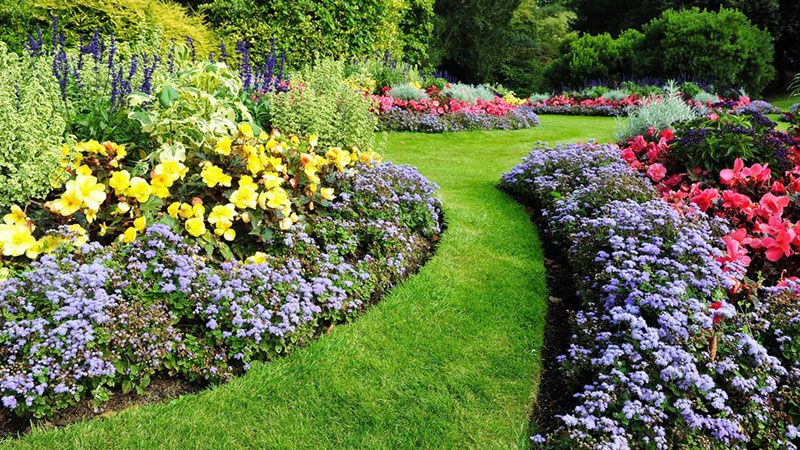
Hydrozoning refers to the practice of planting in groups according to their water requirements. By implementing hydrozoning, your plants' odds of surviving in their first year or so will drastically improve, especially if you're mixing drought-tolerant plants and more tropical plants throughout your landscape. A thoughtful irrigation plan is an important step to complete your Southern California landscape design.
Hydrozoning Ideas For Southern California Yard Design:
1. Trees and Bushes:
Trees and bushes should be in their zone as they typically require less frequent deep watering.
2. Lawn Maintenance:
Deep watering must be done frequently to keep a lawn looking healthy and lush. It is advised, if you want to include a lawn in your landscaping, to put it in a location where you will enjoy it the most and where you can easily fulfill its higher water needs without affecting other plants that might not require as much watering and could be negatively impacted by the pooling water.
3. Groundcover:
Groundcover plants, especially those chosen to replace lawns, should be zoned separately from planting beds because they often require less water than the majority of the plants in your planting beds. This will help prevent root rot caused by too much water.
4. Deep Watering Plants:
When it comes to adding plants with higher water requirements like roses or vegetables, make sure to place them together in a way that makes irrigation simple and effective.
More on Easy & Affordable Southern California Landscape Design
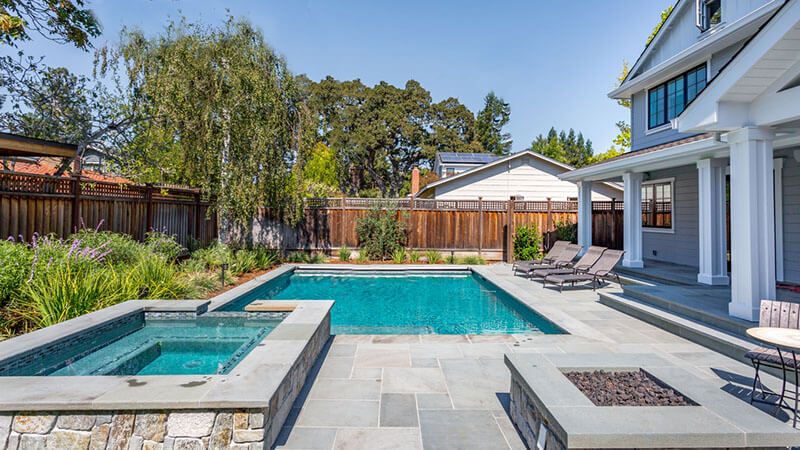
If you feel you need help planning your backyard or front yard, you can always turn to the experts. ShrubHub is probably the best yard design service you've ever heard about for all your landscaping needs. They're operating fully online (great for our social distancing times). They take into account your backyard dimensions, personal style, flower/plant requests, climate, and more - then deliver a stunning yard design within 10 days so you can start building it yourself.
If you're thinking about making some changes to your Southern California backyard, there's no better starting point than ShrubHub.com. With stunning landscape designs starting below $300, it's the most affordable way to add something special to your home!


